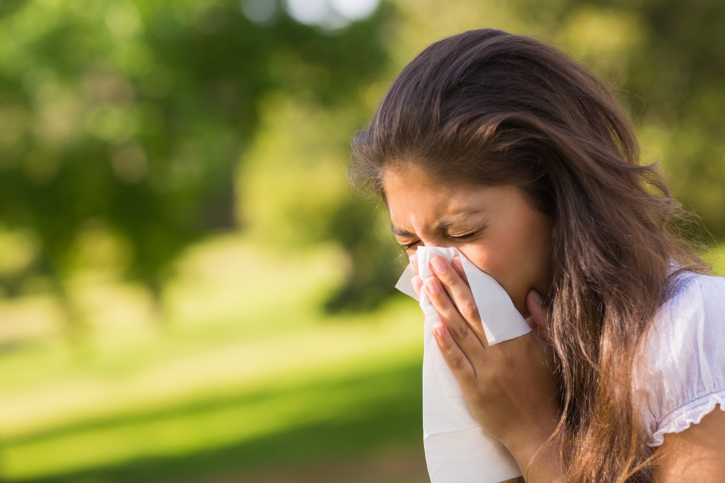Itchy or watery eyes, sneezing, stuffy nose, wheezing, drowsiness—do these symptoms sound familiar? Springtime is great, but for a lot of Americans the change of season can also mean a change to their health. In fact, an estimated 50 million people in the United States are affected by seasonal nasal allergies, and the number is growing. Last year 16.9 million adults and 6.7 million children were diagnosed with hay fever (acaai.org).
Talking with your doctor about your allergies is the best course of action because they can help you address your allergy triggers, prescribe medications, or suggest other forms of treatment like immunotherapy, for example. But there is also a lot you can do in your environment and your daily life to try to keep these symptoms at bay. Here are some tips to help you fight back against those sneeze attacks:
Sinus congestion and hay fever symptoms
Rinsing out your sinuses with a saline nasal solution, or nasal spray, can help improve these symptoms. You can also use a Neti pot or a specially designed squeeze bottle to flush out thickened mucus and irritants from your nose. However, improper use of a Neti pot or other device can lead to infection, so read and follow the package directions carefully.
Note: Always use water that’s distilled, sterile, previously boiled and cooled, or filtered (using a filter with an absolute pore size of 1 micron or smaller) to make up the irrigation solution. Prepare the saline solution with the appropriate water, using the mixture supplied by the Neti pot or nasal bottle kit. Be sure to rinse the irrigation device after each use with distilled, sterile, previously boiled and cooled, or filtered water; then leave it open to air-dry.
Household airborne allergy symptoms
The amount of allergy-causing dust mites or pet dander in your home can be reduced by frequently washing bedding and stuffed toys in hot water, maintaining low humidity, regularly dusting and vacuuming your furniture and carpet, or even replacing carpeting with hard flooring.
Mold allergy symptoms
Reduce moisture in damp areas, such as your bath, kitchen or basement, by using ventilation fans and dehumidifiers. Fix leaks inside and outside your home.
For Health Advocate Members
Remember, if you’re a Health Advocate member, you can call your Personal Health Advocate who can help you with more great allergy-fighting tips as well as help you schedule an appointment with your doctor so you can discuss other allergy treatment options.



